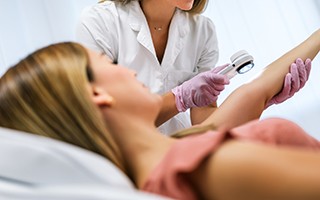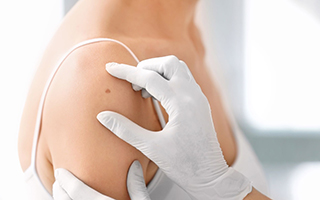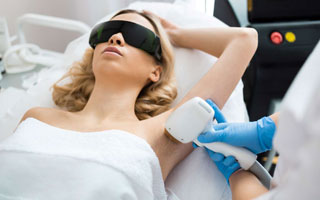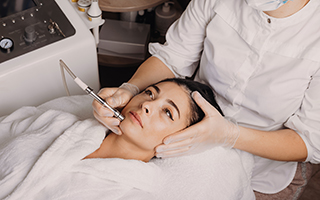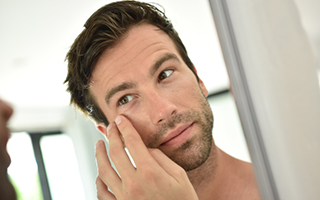Actinic Keratosis
Detecting and Treating Precancerous Skin Lesions for Bryn Mawr, Newtown Square, Philadelphia, and the Main Line
- Home
- Medical Dermatology
- DERMATOLOGY CONDITIONS
- Actinic Keratosis
For patients dealing with an actinic keratosis, Bryn Mawr Skin & Cancer Institute explains that the scaly lesion, which is also referred to as a solar keratosis, is not cancerous, but is a “pre-cancer.” While this dermatological condition isn’t considered to be serious or life-threatening, it can develop into a type of skin cancer called squamous cell carcinoma if left untreated. For this reason, it is important to have a suspected actinic keratosis examined by a dermatologist as soon as possible.
Find the most effective treatments for an actinic keratosis at Bryn Mawr Skin & Cancer Institute. Please BOOK ONLINE, call 610.525.5028, or Contact Us.
What Causes Actinic Keratosis?
The primary cause of an actinic keratosis is cumulative and/or intense exposure to ultraviolet radiation from either sunlight or artificial sources such as tanning beds.
What Are the Symptoms of Actinic Keratosis?
Actinic keratoses are most likely to develop on a sun-exposed area, such as the face, lips, ears, forearms, scalp, neck or back of the hands. One variation of actinic keratosis, actinic cheilitis, affects the lower lip.
Actinic keratoses appear as rough, dry, or scaly lesions on the skin that do not go away. More advanced actinic keratoses are hard, wartlike, bumps with a sandpapery texture.
Actinic keratoses vary in size, but most are between 1 to 2 centimeters. Their color can be a combination of red, tan, pink, brown, or white. Patients who have an actinic keratosis may experience itching, pain, sensitivity, burning, bleeding, and crusting. They are often identified by their texture, as they are dry and rough to the touch.
What Are the Risk Factors for Actinic Keratosis?
This precancerous condition is more common after the age of 40 and is associated with prolonged, unprotected sun exposure. Other risk factors for the development of actinic keratoses include red or blond hair, light-colored eyes, frequent sunburns in the past, a tendency to freckle or get sunburned easily, and a weakened immune system. People who spend a great deal of time outdoors for work or recreational activities are most at risk.
Treatment Options for Actinic Keratosis
Any new or suspicious lesions on the skin that persist should be checked out by a dermatologist, especially if you are experiencing symptoms such as bleeding, itching, or pain. The Bryn Mawr Skin & Cancer Institute team offers various treatment options for actinic keratoses, including prescription creams and ointments, cryotherapy, photodynamic therapy, and surgery. Patients who have actinic keratoses should be vigilant about sun protection to prevent additional skin damage from occurring.
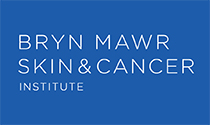
Meet Our Dermatologists &
Certified Physician Assistants
Our board-certified dermatologists & PA-Cs are dedicated to detecting and treating skin cancers. We treat the full spectrum of skin diseases. Our Mohs and Plastic Surgery practices are integrated, and offer patients the most advanced skin cancer treatment, delivering superior outcomes.
What Can be Done to Prevent Actinic Keratoses?
Protecting your skin from sun damage is the most effective way of reducing your risk of developing an actinic keratosis. Take sun protective measures, such as avoiding exposure between 10 a.m. and 3 p.m., limit the amount of time you spend in the sun, wear an adequate amount of broad-spectrum sunscreen of at least SPF 30 throughout the year, wear ultraviolet protective clothing when outdoors, don’t use tanning beds, examine your skin regularly for any changes, and see a dermatologist regularly to have a skin cancer exam.
Proper diagnosis and treatment for actinic keratosis is available at Bryn Mawr Skin & Cancer Institute serving Bryn Mawr, Newtown Square, and Philadelphia. To schedule an appointment, Please BOOK ONLINE, call 610.525.5028, or Contact Us.




